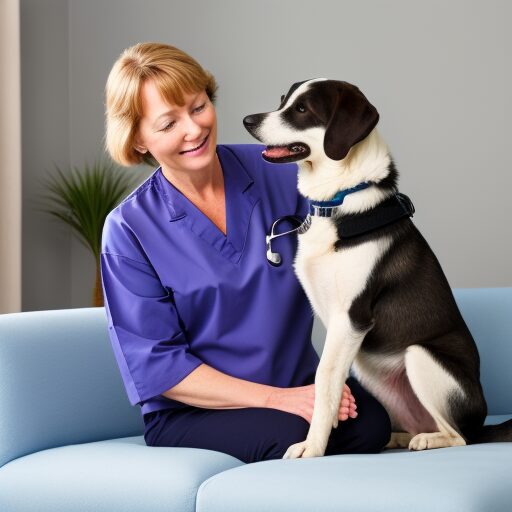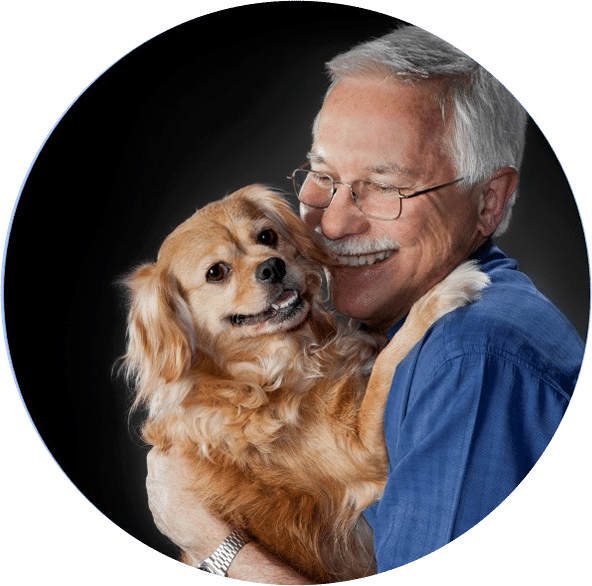Arthritic Diseases in Dogs and Cats
Old dogs and cats often have stiff old bones. These poor pets creak and hobble around the house, struggle up and down stairs and work especially hard to get to their feet in the chilly mornings. Don’t assume that this is a normal ‘old age thing’ and that nothing can be done. The truth is that old pets with arthritis have a new lease on life if treated properly and there is no reason to allow your dog to suffer the pain of ‘old bones’.
What Causes Arthritis?
Arthritis is caused by wear and tear on the joints in an animal’s body. One in five dogs is affected by arthritis. In dogs more than six years of age, 65% have arthritis.
Sometimes the cause is some form of trauma to the joints such as that which occurs with sprains and fractures. For instance, when a dog suffers from a ruptured cruciate ligament in its knee joint, arthritis in the damaged joint is quite common.
In other cases, the joints develop in an abnormal way and arthritis results. Hip dysplasia is a common developmental abnormality where arthritis often results. Normally a dog’s hip joint is a smooth ‘ball and socket’ joint but in hip dysplasia, the ball and socket more closely resemble a ‘square peg in a round hole’. As the dog walks, the ‘square peg’ grinds away mercilessly at the joint and arthritis develops.

Once a joint is injured, a cascade of damaging enzymes is released from the injured tissues. These enzymes cause further damage to the joint structure. The damaging enzymes spread deep into cracks that appear in the joint cartilage, severely damaging the underlying bone. The irritation causes the bone to react aggressively and boney outgrowths and spikes grow into and around the joint, crippling the pet and causing continual pain.
How Will I Know My Pet Has Arthritis?
Arthritis makes movement painful. For this reason, an affected dog or cat will be reluctant to exercise and is less likely to jump, play or chase balls. Your pet is likely to have difficulty climbing stairs and many owners note the dog hesitates before it jumps into the back of the station wagon or utility, whereas previously this was no problem.
Sometimes, these early signs are missed or ignored.
That’s a big mistake because early treatment will really slow down the progression of the disease and will give pets a much better quality of life.
Dogs which have difficulty in rising after resting usually have arthritis. However, after they have struggled to get up, they tend to move more freely after they ‘warm up’. Dogs with arthritis will often lag behind during walks and they may limp.
They have a stiff, stilted gait and show an exaggerated swinging of their hips as they walk. Some will yelp with pain when touched. Many dogs will start to soil the house because it is too difficult to go outside and some will become aggressive if they are disturbed or when owners or children try to move them.
Arthritis is common in old cats as well but it is very often missed. Affected cats have problems grooming themselves and look untidy. They walk with little quick stilted back leg movements and often have difficulty using their litter tray accurately as they cannot squat when toileting.
Certainly an animal with arthritis ‘loses its spark’ and has a reduced quality of life.

How Will My Vet Treat the Arthritis?
Your veterinarian is likely to use medication to reduce the pain and to give your dog back some quality of life and will advise on weight management and the use of compounds called nutraceuticals.
Modern anti-arthritic medications are called non-steroidal anti-inflammatory drugs (NSAIDS). There is a wide variety available. While approximately 80% of dogs improve with medical treatment, the medications do not cure the arthritis. In many cases, animals affected by arthritis will need to be on medication for the rest of their lives.
Modern NSAIDS have lower side-effects compared with the older version. The newer forms are quite specific in the way they work to reduce pain without affecting, for instance, the pet’s gastro-intestinal function.
Your vet is also likely to advise the use of compounds often called nutraceuticals. A nutraceutical is any substance that is a food or part of a food that provides medical or health benefits, including the prevention and treatment of disease.
Chondroitin and glucosamine are two nutraceuticals that are useful in arthritis as they assist in rebuilding the cartilage of the joint surface.
There are also a variety of prepared dog foods that contain these same nutraceuticals and are therefore very useful in keeping your dog pain free and mobile. These are usually prescription diets and are only available from your veterinarian.
To reduce the stress and strain on your pet’s joints, be sure to keep your dog in trim condition. Obesity contributes significantly to the pain arthritic dogs experience, so reducing your dog’s weight by feeding it a low calorie weight-reducing diet is important. Your veterinarian will be able to help with that.
Careful exercise is also important but don’t overdo it because you will place strain on the damaged joints. One of the complications of arthritis is that the muscles in the affected legs wither away because the pet is too sore to exercise. Gentle exercise will prevent that. Try to involve your dog in ‘low impact’ exercise such as swimming. If this is not possible, then gentle walking is good. Avoid running and jumping.
In cold weather arthritis is always worse. Make sure your dog has comfortable bedding and a warm place to sleep. Consider a dog coat to keep it comfortable and if it is an outside dog, ensure it has a warm kennel with a raised floor.
Don’t forget that early treatment for arthritis is the key to pain-free years as your pet ages.
